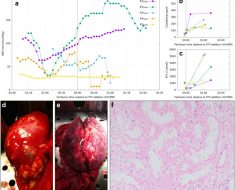This past flu season in Maine was the worst in at least five years, according to the Centers for Disease Control, with 9,018 reported cases, 82 deaths and 1,750 hospitalizations.
Each year in the United States, 21,000–49,000 people die due to seasonal flu and its complications, and 95,000–172,000 people are hospitalized, according to CDC estimates.
Because it’s difficult to predict year-to-year effectiveness of influenza vaccines, University of Maine scientists believe novel treatments that are independent of vaccine effectiveness are vital.
The Bill & Melinda Gates Foundation concurs. One of its “Grand Challenges”—initiatives that foster innovation to solve global health and development problems—is a call to develop a universal influenza vaccine to end the pandemic threat. This challenge was issued this year, the 100-year anniversary of the 1918 flu pandemic that killed an estimated 50 million people on Earth.
To develop effective new treatments, a better understanding of the immune response to the flu virus infection is needed, say Carol Kim, professor of microbiology; Paul Millard, associate professor of chemical and biological engineering; and Con Sullivan, assistant research professor of molecular and biomedical sciences.
Toward that end, the UMaine team will utilize a $435,166 award from the National Institutes of Health (NIH) to examine the immune response to flu infection, as well as factors that control optimum antiviral activity.
Influenza A virus infections originate in epithelial cells (sometimes called safety shields) that line the respiratory tract. Symptoms of the virus frequently include fever, chills, a cough, sore throat, muscle aches and a runny nose. At times, the contagious infection can become systemic, resulting in multi-organ failure and death.
During an infection, a person’s innate antiviral immune response is activated, which initiates a feedforward loop leading to the recruitment of excess neutrophils, or white blood cells.
The neutrophils, or first responders, play a key role in a person’s immune response to bacterial and fungal infections. The influx of white blood cells is crucial to eliminate the flu virus. But the influx also can trigger a dangerous hyperinflammatory response, sepsis, for example—that damages multiple organ systems and can result in death.
The UMaine team will look for the so-called immunologic tipping point between infection elimination and a hyperinflammatory response that results in organ failure and death. The researchers also will explore mechanisms for reducing hyperinflammatory responses initiated by viral infections.
Kim, Millard and Sullivan will use zebrafish from the UMaine Zebrafish Facility as flu virus models. The freshwater fish is nearly transparent in the larval stage, has a similar genetic structure to humans and, like people, is a vertebrate with the same major organs and tissues.
Zebrafish and humans also respond to infections and vaccinations in similar ways and zebrafish neutrophils have many similarities to human neutrophils.
UMaine scientists have used zebrafish for health-related research since 1999, when Kim established the Zebrafish Facility in Hitchner Hall with state and federal funds. The facility’s 1,100 tanks can hold as many as 36,800 zebrafish.
In 2014, The Kim Lab was the first to develop the human influenza infection model in zebrafish, which is documented in the journal Disease Models and Mechanisms.
“The emergence of strains of influenza virus with the potential for causing widespread disease of pandemic proportions is a real concern,” says Kim. “In the zebrafish, we have a powerful model system to help us understand the infection process and immune response to human diseases such as influenza.”
Source: Read Full Article





